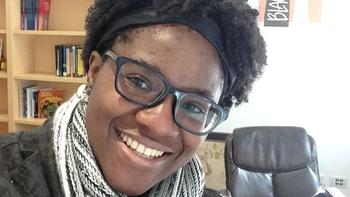It’s Black History Month but Let’s Talk About Whiteness
Sirry Alang, The Morning Call, February 26, 2019
{snip} But there is another wall, one that prevents full citizenship, inhibits social and economic inclusion and undermines the humanity of people of color.
That wall is hegemonic whiteness. One of the key features of hegemonic whiteness is that it is invisible to those who benefit from it.
Hegemonic whiteness is the dominance of a white political structure, the normative nature of whiteness, and its role in shaping social organization. Hegemonic whiteness reproduces a structure that oppresses and rationalizes the oppression of nonwhite cultures while maintaining the individual and collective innocence of whites.
Hegemonic whiteness is the wall behind which the family of a smirking teenager paid a public relations firm to defend his actions toward a Native American elder. Many chose not to see his occupation of the space inches from the elder within the context of white racial entitlement; a precursor to the Native American genocide.
It is the same wall that sought to prevent students from speaking Chinese on a college campus. It enables some white folks to feel entitled to understanding conversations between two people of color that are in a language other than English. Hegemonic whiteness limits full inclusion of Latino populations who are being asked to work harder at assimilation.
{snip} Hegemonic whiteness {snip} dictates whose behavior is normalized, whose behavior is seen as a problem, and who gets the benefit of doubt.
Hegemonic whiteness explains why a governor confesses to wearing blackface, insists on remaining in power because of his moral compass, yet shows no signs that he understands exactly why his actions were wrong. {snip}
Hegemonic whiteness is {snip} what enabled a potential presidential candidate to say that he does not see color, thereby undermining the roles of race and racism in shaping the life chances of people of color.
{snip}
Hegemonic whiteness is the invisible wall between diversity and inclusion, and between inclusion and justice. {snip}
I worked for local government and now work in higher education. I have sat in many diversity and inclusion meetings, workshops and the like. I research exclusion, systems of oppression and their impact on health. I belong to and work with populations that experience exclusion. I have learned three things.
{snip} We don’t exist to serve the diversity and global exposure needs of white people. Include us because we are human and deserve the opportunity, freedom and resources to execute our signature dance moves.
{snip}
But back to the wall. As the fight for the southern border wall continues, let’s realize that hegemonic whiteness is an invisible wall serving some of the same purposes, only more insidiously. It creates an inferior “other” — people of color. It polices our actions and reminds us that we do not belong in certain spaces. It questions our motives and our authenticity. It assumes the worst about us, yet rationalizes these assumptions as being for our own good or for public safety.
The question now is what will white people do about the longstanding wall of hegemonic whiteness?

Sirry Alang is an assistant professor in the Health, Medicine and Society Program in Lehigh University’s Department of Sociology and Anthropology.















